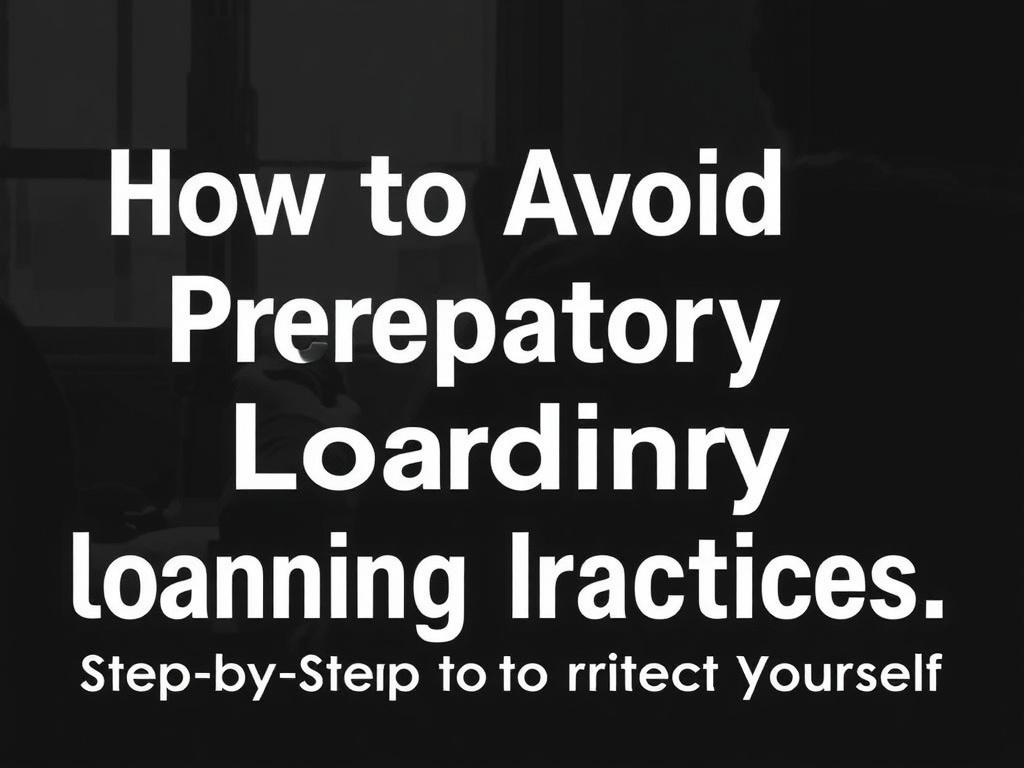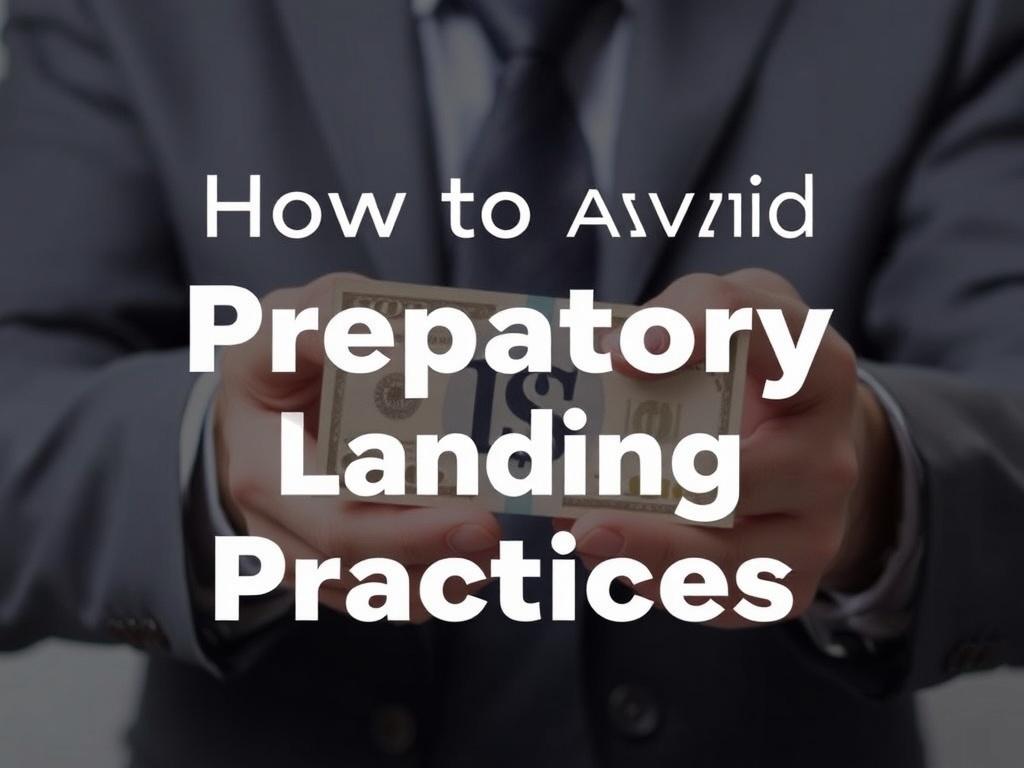SQLITE NOT INSTALLED
Содержание
Understanding Predatory Lending: What It Is and Why It Matters
Predatory lending is a term that sends chills down the spine of many borrowers. It describes unfair, deceptive, or abusive lending practices that trap borrowers in cycles of debt. These loans often come with exorbitant interest rates, hidden fees, and unreasonable terms that exploit consumers, especially those facing financial vulnerabilities. Understanding predatory lending is crucial because it helps you recognize warning signs, avoid financial pitfalls, and make informed borrowing decisions.
At its core, predatory lending takes advantage of the borrower’s lack of knowledge or desperation. While not all high-interest loans are predatory, the difference lies in transparency, fairness, and intent. Predatory lenders often target specific groups such as low-income families, minorities, seniors, and individuals with poor credit scores. By comprehending these practices, you put yourself in the best position to avoid falling victim and protect your financial future.
Common Signs of Predatory Lending Practices You Should Watch For
Identifying predatory lending can be tricky if you don’t know what to look for. Here are some common red flags that indicate you might be dealing with a predatory lender:
- Excessively high interest rates and fees: When the cost of borrowing is dramatically higher than standard rates in the market, it is a warning sign.
- Loan flipping: Repeatedly refinancing loans without reducing the principal, causing fees and interest to pile up.
- Balloon payments: A large lump-sum payment due at the end of the loan term, often unaffordable for the borrower.
- Pressure tactics: Pushy salespeople pressuring you to sign quickly or avoid reading the fine print.
- Prepayment penalties: Fees imposed for repaying the loan early, which trap borrowers in bad loans.
- Misleading or confusing terms: Use of complex language or hiding important details in the fine print.
By being aware of these common signs, you can avoid falling prey to predatory lending before it’s too late.
How to Avoid Predatory Lending: Step-by-Step Actions to Protect Yourself

Avoiding predatory lending is not always straightforward, but a few proactive steps can make a significant difference. Here’s a step-by-step guide to help you protect your finances:
1. Educate Yourself About Loan Types
Start by familiarizing yourself with the different types of loans available. Understand the basics of mortgages, payday loans, personal loans, and auto loans. Knowing the typical terms and interest rates makes it easier to spot when something is amiss.
2. Check Your Credit Score
A good credit score opens doors to better loan terms. Even if your score is low, it’s important to monitor it and take steps to improve it. Many predatory lenders exploit low credit scores by charging higher rates, but raising your score can increase your borrowing options.
3. Shop Around and Compare Offers
Never accept the first loan offer you receive. Take the time to research various lenders, rates, fees, and terms. Comparing multiple quotes highlights discrepancies and helps you find the most reasonable and transparent options.
4. Read the Fine Print Carefully
Before signing any loan agreement, read every detail carefully—even the fine print. Look out for hidden fees, prepayment penalties, and unclear terms. Don’t hesitate to ask questions or seek clarification if something doesn’t make sense.
5. Seek Help From Trusted Advisors
If you’re unsure about a loan, consult with trustworthy sources such as financial counselors, legal experts, or consumer protection agencies. They can provide valuable insights and help you evaluate the legitimacy of an offer.
6. Avoid Loans That Require Upfront Fees
Be wary of lenders who ask for payment before providing a loan. Legitimate lenders typically deduct fees from your loan proceeds rather than demanding upfront payments.
7. Use Government or Nonprofit Programs
Some government programs and nonprofit organizations offer loans or financial assistance with fair terms. These options are worth exploring to avoid predatory lenders.
8. Trust Your Instincts
If something feels off, trust your gut. High-pressure sales tactics or confusing offers often signal risk. Walk away if a deal seems too good or too complicated.
Key Terms Every Borrower Should Know
Having a grasp of common lending terminology can empower you during the borrowing process. Here is a table explaining some important terms you might encounter:
| Term | Meaning |
|---|---|
| APR (Annual Percentage Rate) | The total yearly cost of borrowing, including interest and fees, expressed as a percentage. |
| Principal | The original amount of money borrowed, not including interest or fees. |
| Balloon Payment | A large one-time payment due at the end of a loan term. |
| Prepayment Penalty | A fee charged when you pay off a loan early. |
| Loan Flipping | Repeatedly refinancing a loan to generate fees without reducing the principal. |
| Secured Loan | A loan backed by collateral, such as a house or car. |
| Unsecured Loan | A loan that does not require collateral, often having higher interest rates. |
Understanding these terms will help you read loan offers critically and communicate confidently with lenders.
Types of Predatory Lending to Watch Out For
Predatory lending can take many forms, each with unique characteristics. Here are some common types to be aware of:
- Payday Loans: Short-term, high-interest loans that often trap borrowers in cycles of debt due to high fees.
- Title Loans: Loans secured by your vehicle’s title, risking repossession if you cannot repay.
- Subprime Mortgages: Mortgages offered to borrowers with poor credit but come with risky terms and high interest.
- Auto Loan Fraud: Inflated prices, hidden fees, or loan flipping targeting car buyers.
- Credit Card Traps: Cards with excessively high-interest rates, hidden fees, and complicated billing practices.
Knowing these allows you to take extra care if you encounter such offers and verify their legitimacy.
How Predatory Lending Impacts Borrowers and Communities

The effects of predatory lending extend far beyond individual borrowers. They create financial strain, increased debt burdens, and even homelessness in severe cases. The high fees and rates often lead to loan defaults, damaging credit scores and limiting future borrowing ability.
On a community level, predatory lending can exacerbate inequality and financial instability. Low-income neighborhoods, where such practices are more common, can experience deteriorated economic health. Families caught in predatory lending cycles struggle to save, invest, or improve their living conditions, leading to negative social outcomes.
Breaking free from these harmful patterns requires both individual awareness and collective action, including supporting stricter regulations and consumer education.
Regulatory Protections Against Predatory Lending
Governments and regulatory bodies have put several protections in place to combat predatory lending. These include:
- The Truth in Lending Act (TILA): Requires lenders to disclose full terms clearly.
- The Equal Credit Opportunity Act (ECOA): Prevents discrimination in lending.
- The Dodd-Frank Act: Establishes stricter oversight of lenders and mortgage brokers.
- State-Specific Laws: Some states have caps on interest rates and additional borrower protections.
However, enforcement varies, and scammers find new ways to exploit loopholes. Staying informed about your rights and local laws equips you to resist predatory offers.
Resources for Victims of Predatory Lending

If you have fallen victim to predatory lending, know that you are not alone and help is available. Consider the following resources:
- Consumer Financial Protection Bureau (CFPB): Offers complaint filing and guidance on resolving disputes.
- Nonprofit Credit Counseling Agencies: Provide financial advice and debt management assistance.
- Legal Aid Services: Can offer free or low-cost legal help to challenge unfair loans.
- State Attorney General Offices: Can investigate and act against predatory lenders.
Taking action early can prevent escalation and help you regain control of your financial situation.
Conclusion
Avoiding predatory lending practices requires vigilance, knowledge, and patience. By understanding what predatory lending looks like, learning key financial concepts, and following practical steps to compare loans and read fine print, you empower yourself to make safer borrowing decisions. Remember, legitimate lenders won’t pressure you to rush or hide critical details. If you’re uncertain, seek professional guidance and explore government or nonprofit assistance options. Protecting yourself from predatory lending not only safeguards your finances but also contributes to healthier communities. Stay informed, trust your instincts, and don’t hesitate to say no to offers that feel predatory. Your financial well-being is worth every ounce of caution.
Опубликовано: 23 July 2025 Кредитрон – блог о кредитах, финансах и прочих реверансах
Кредитрон – блог о кредитах, финансах и прочих реверансах

